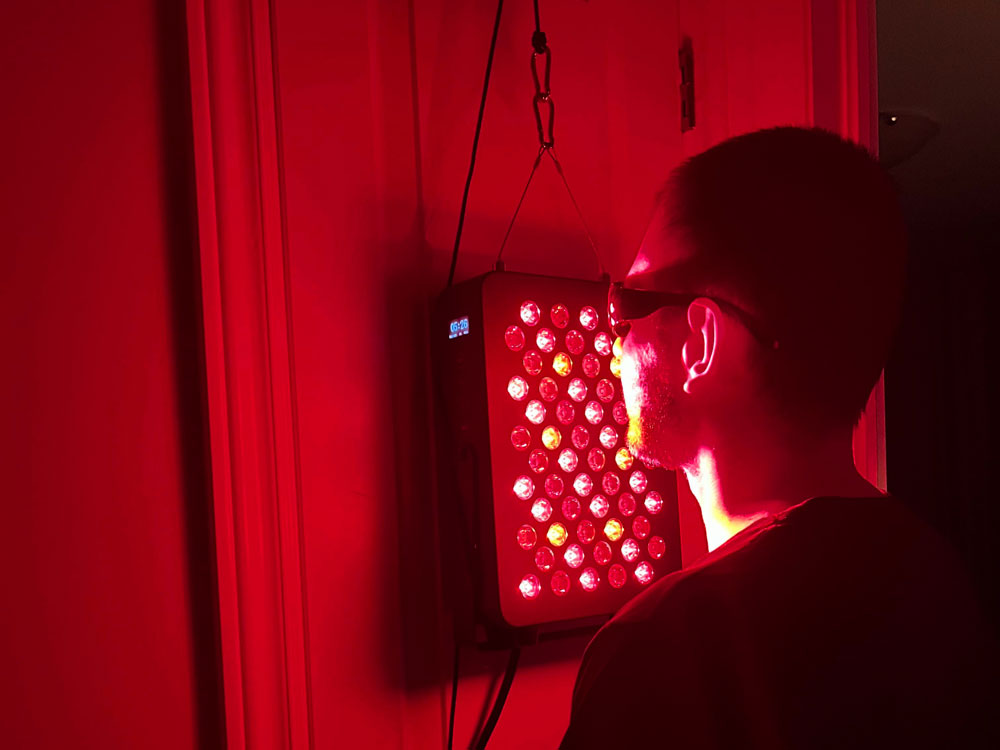![]() Free Shipping
Free Shipping ![]() Buy Now, Pay Later
Buy Now, Pay Later ![]() Eligible
Eligible
Red Light Therapy: The Secret Edge for Auto Racers

In the high-stakes world of auto racing, every millisecond counts. Drivers push their bodies to the limit—enduring extreme G-forces, mental fatigue, and physical strain—all while maintaining razor-sharp focus at 200+ mph. While cutting-edge aerodynamics, tire compounds, and engine performance dominate the headlines, there’s an under-the-radar recovery tool giving elite racers a competitive advantage: red light therapy (RLT).
Also known as photobiomodulation (PBM), red light therapy is gaining traction in motorsports for its ability to enhance recovery, reduce inflammation, and even sharpen cognitive function. From Formula 1 to NASCAR, drivers and pit crews are quietly integrating RLT into their routines to gain an edge. But how does it work, and why are top-tier racers swearing by it?
The Science Behind Red Light Therapy
Red light therapy uses low-wavelength red and near-infrared (NIR) light to penetrate the skin and stimulate cellular energy production (ATP). This process:
- Reduces inflammation – Critical for drivers dealing with muscle fatigue and joint stress.
- Speeds up recovery – Helps repair micro-tears in muscles after grueling races.
- Enhances circulation – Improves oxygen delivery to tissues, aiding endurance.
- Boosts cognitive function – Studies suggest RLT may improve alertness and reaction time.
For auto racers, who endure extreme physical and mental demands, these benefits can be game-changing.
How Racers Are Using Red Light Therapy
1. Faster Recovery Between Races & Training
Racing is brutal on the body. The constant vibration, G-forces, and heat inside the cockpit lead to muscle stiffness and fatigue. Many drivers, including some in F1 and IndyCar, use RLT panels or wearable devices post-race to accelerate muscle recovery.
- Lewis Hamilton and other elite drivers have incorporated infrared saunas (which include red/NIR light) into their recovery protocols.
- NASCAR pit crews use handheld RLT devices to soothe muscle soreness after rapid, high-intensity movements during tire changes.
2. Reducing Inflammation & Joint Pain
Long races (like the 24 Hours of Le Mans) put immense strain on the neck, back, and wrists. Chronic inflammation can impair performance over a season.
- Red light therapy belts are used by drivers to target sore areas like the neck and shoulders.
- Near-infrared wraps help with deep-tissue healing, reducing reliance on painkillers.
3. Enhancing Mental Focus & Reaction Time
Studies suggest that red and near-infrared light can improve brain function by increasing blood flow and reducing oxidative stress in neural tissues.
- Some drivers use RLT helmets or visors before races to boost alertness.
- Teams experiment with pre-race red light exposure to sharpen reaction times—critical for split-second decisions at 200 mph.
VELLGUS Elite V2
THE #1 RATED RED LIGHT DEVICE
VELLGUS pro V2
THE #1 RATED FULL BODY RED LIGHT DEVICE
Real-World Success Stories
While many teams keep their exact RLT protocols confidential, some notable examples include:
- Formula 1 Teams – Multiple outfits use full-body RLT beds for driver recovery between races.
- IndyCar’s Scott Dixon – A proponent of advanced recovery tech, including infrared and red light therapy.
- Endurance Racers – Drivers in WEC and IMSA rely on RLT to maintain peak performance during marathon events.
How to Incorporate Red Light Therapy Like a Pro Racer
You don’t need a million-dollar team budget to benefit from RLT. Here’s how to integrate it:
- Post-Workout Recovery – Use an RLT panel (630nm-850nm) for 10-20 minutes on sore muscles.
- Pre-Race Mental Boost – Try a red light face mask or helmet device for 5-10 minutes before driving.
- Targeted Pain Relief – Apply a wearable RLT wrap on stiff joints (neck, wrists, lower back).
The Future of RLT in Motorsports
As research grows, expect more teams to adopt RLT not just for recovery but also for real-time performance enhancement. Imagine:
- RLT-integrated racing suits to reduce muscle fatigue during long stints.
- In-helmet light therapy to maintain driver focus in endurance races.
- Pit crew recovery stations with rapid RLT exposure between stops.
Final Lap: Is Red Light Therapy Worth the Hype?
For auto racers, marginal gains separate champions from the rest. Red light therapy isn’t a magic bullet—but when combined with elite training, nutrition, and recovery, it’s proving to be a secret weapon in the world of high-speed competition.
Whether you’re a pro driver, sim racer, or fitness enthusiast, RLT could be the edge you’ve been missing. The light is on—will you step into it?
🚦 Ready to race faster, recover smarter, and perform at your peak? Red light therapy might just be your ticket to the podium. 🏁








